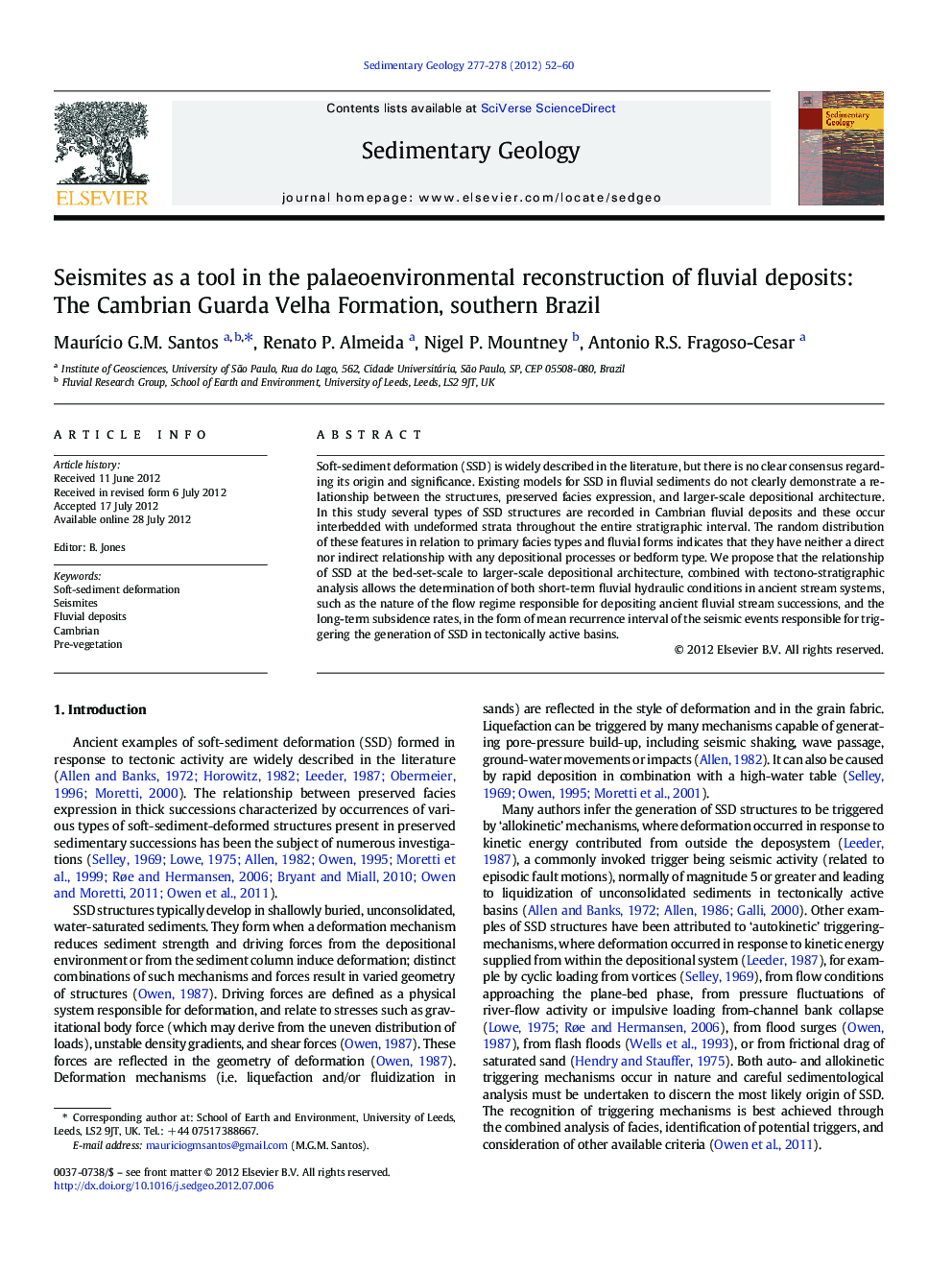| Article ID | Journal | Published Year | Pages | File Type |
|---|---|---|---|---|
| 4689740 | Sedimentary Geology | 2012 | 9 Pages |
Soft-sediment deformation (SSD) is widely described in the literature, but there is no clear consensus regarding its origin and significance. Existing models for SSD in fluvial sediments do not clearly demonstrate a relationship between the structures, preserved facies expression, and larger-scale depositional architecture. In this study several types of SSD structures are recorded in Cambrian fluvial deposits and these occur interbedded with undeformed strata throughout the entire stratigraphic interval. The random distribution of these features in relation to primary facies types and fluvial forms indicates that they have neither a direct nor indirect relationship with any depositional processes or bedform type. We propose that the relationship of SSD at the bed-set-scale to larger-scale depositional architecture, combined with tectono-stratigraphic analysis allows the determination of both short-term fluvial hydraulic conditions in ancient stream systems, such as the nature of the flow regime responsible for depositing ancient fluvial stream successions, and the long-term subsidence rates, in the form of mean recurrence interval of the seismic events responsible for triggering the generation of SSD in tectonically active basins.
► We present a novel interpretation of soft-sediment deformation. ► We extract palaeoenvironmental information from seismites. ► This is a new tool for the interpretation of fluvial deposits.
